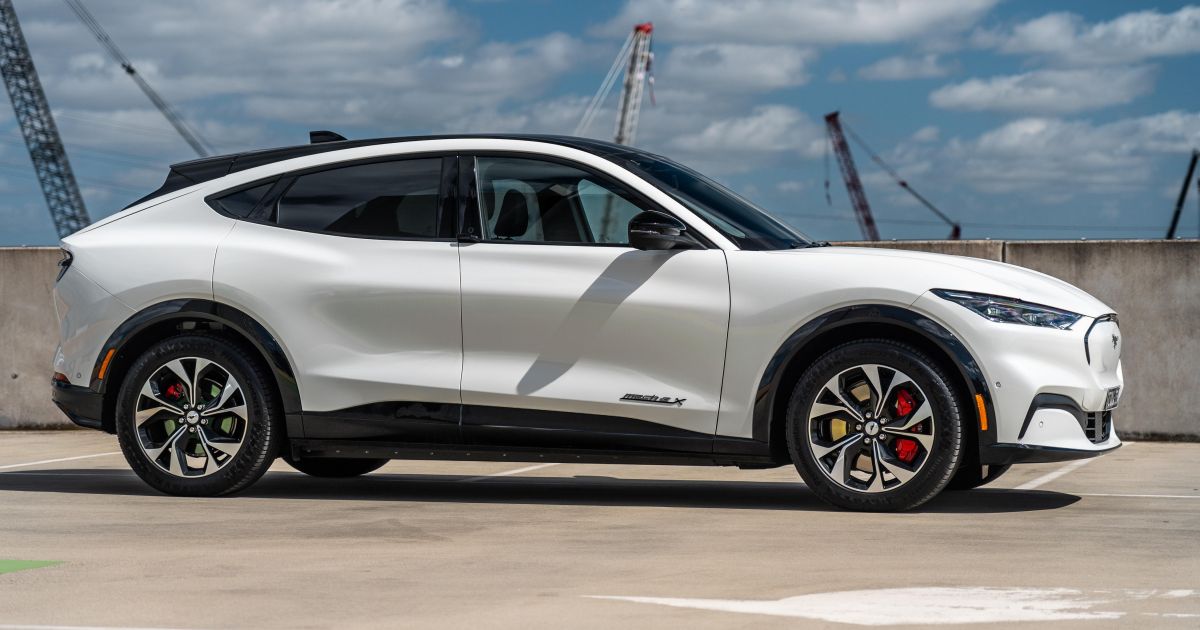Tesla Autopilot among 11 ‘poor’ driver assist systems, finds safety group
A US safety body has tested a raft of partially autonomous driving systems, including those from Ford, Mercedes-Benz and Tesla – and given most a ‘poor’ mark.
The Insurance Institute for Highway Safety (IIHS), an American organisation funded by insurers that crash tests vehicles, tested 14 semi-autonomous systems.
These semi-autonomous driving assist features allow the vehicle to control the acceleration, braking and steering – for example keeping it at a set speed and centred in its lane but slowing it down when a vehicle slows in front.
Only the Lexus LS’ Teammate system received an ‘acceptable’ rating, while the GMC Sierra’s Super Cruise and the Nissan Ariya’s ProPILOT Assist with Navi-link were rated as ‘marginal’.
That left ‘poor’ ratings for 11 other systems, listed below:
- BMW Active Driving Assistant Pro
- Ford BlueCruise
- Ford’s adaptive cruise control with stop/go and lane centring
- Genesis Highway Driving Assist 2
- Genesis’ adaptive cruise control and Lane Following Assist
- Lexus’ adaptive cruise control and Lane Tracing Assist
- Mercedes-Benz Active Distance Assist Distronic with Active Steering Assist
- Nissan ProPILOT Assist 2.0
- Tesla Autopilot (version 2023.7.10)
- Tesla Full Self-Driving Beta (version 2023.7.10)
- Volvo Pilot Assist
Some of these systems, such as GM’s Super Cruise, Ford’s BlueCruise and Tesla’s Full Self-Driving (FSD) aren’t currently offered in Australia.
The IIHS also flags these ratings apply only to these systems in the particular vehicles tested.
In addition to the LS, Sierra and Ariya, the IIHS tested current-generation versions of the BMW X1, Ford Mustang Mach-E, Genesis G90, Mercedes-Benz C-Class, Tesla Model 3, and Volvo S90.
It’s worth noting Tesla’s two systems have subsequently received updates following a December 2023 recall in the US.
The IIHS says the new ratings are aimed to encourage safeguards that help reduce intentional misuse and driver in attention, as well as to discourage systems that encourage risk in other ways – for example, semi-autonomous driving systems that work with autonomous emergency braking turned off.
It says the tests are conducted on both a closed test track and on public roads, with some performance areas weighted more heavily than others.
The IIHS said a ‘good’ rating requires:
- Monitoring of the driver’s gaze and hand position
- Multiple types of “rapidly escalating” alerts to get the driver’s attention
- Fail-safe procedure that slows vehicle, notifies manufacturer
- Automated lane changes that can be initiated and confirmed by the driver
- Adaptive cruise control that doesn’t automatically resume after a lengthy stop or driver inattention
- Lane centring that doesn’t discourage steering by the driver
- Automation features that can’t be used with seatbelts unfastened or AEB or lane-keep assist disabled
Grades were awarded across seven categories, with each vehicle and its system given an overall grade.
Notably, Tesla’s systems had the most ‘poor’ scores across these categories, with five in total. Genesis’ systems received four ‘poor’ category scores, though they received more ‘good’ scores than Tesla.
You can view the full scoring breakdown here and a breakdown of the testing procedures here.
IIHS testing found some vehicles didn’t adequately monitor whether the driver was paying attention or alert them forcefully enough.
Engineers tested the vehicles with the lens of the driver monitoring camera blocked, or with the driver’s face obscured or looking down or their hands either not on the wheel or on a mobile phone-shaped block.
None of the 14 systems met all these requirements, though the IIHS said Ford’s two systems came close.
Ford’s systems were also praised for “timely and persistent attention reminders”, with Nissan’s systems and Tesla’s Full Self-Driving performing “almost as well”.
Only GM Super Cruise and Tesla Full Self-Driving can make lane changes without driver input, and only GM and Tesla’s systems switch off lane centring when the driver provides any manual steering inputs.
“Some drivers may feel that partial automation makes long drives easier, but there is little evidence it makes driving safer,” said IIHS president David Harkey.
“As many high-profile crashes have illustrated, it can introduce new risks when systems lack the appropriate safeguards.
“These results are worrying, considering how quickly vehicles with these partial automation systems are hitting our roadways.
“But there’s a silver lining if you look at the performance of the group as a whole. No single system did well across the board, but in each category at least one system performed well.
“That means the fixes are readily available and, in some cases, may be accomplished with nothing more than a simple software update.”
Locally, safety authority ANCAP undertakes testing of safety features like AEB and lane-keep assist.
The availability of a driver attention monitoring system is also taken into account when assessing a vehicle, though according to its testing protocols this is based on information supplied by the carmaker instead of testing undertaken by the authority.






